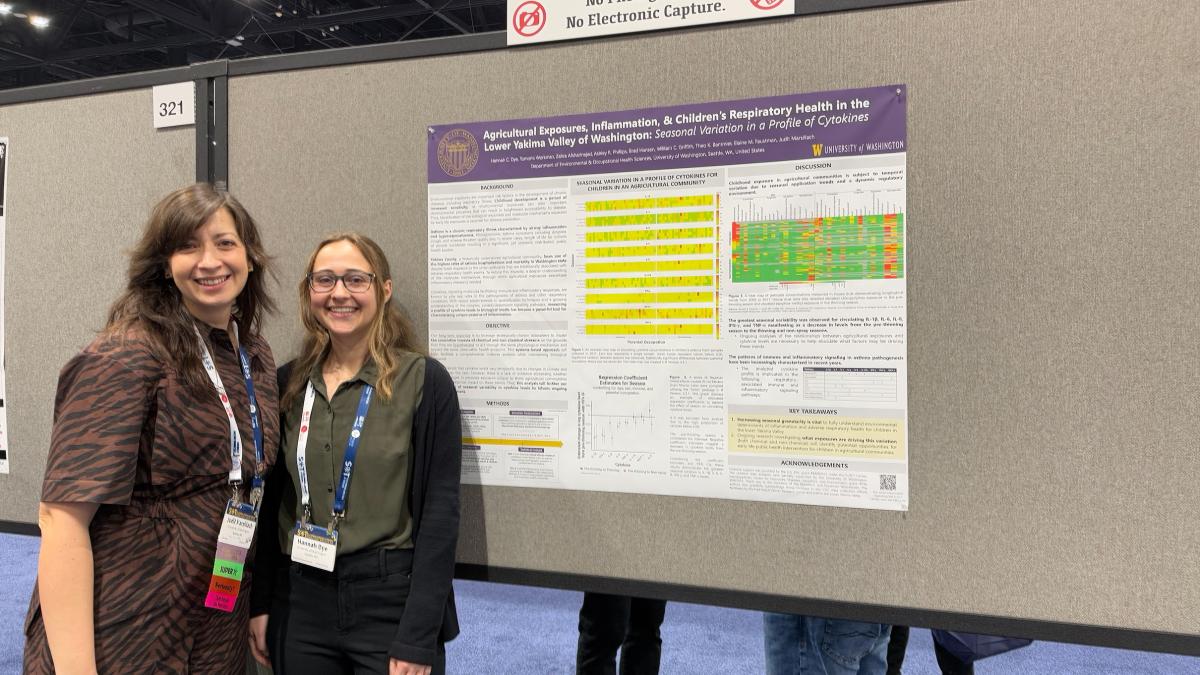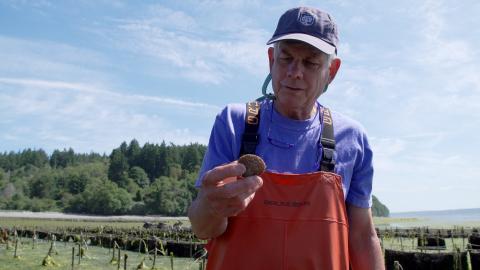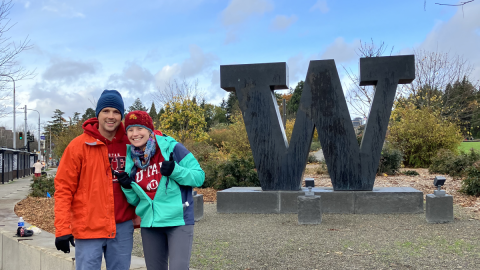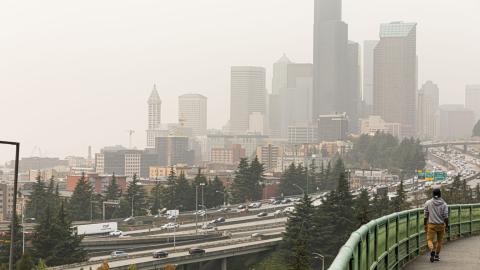Hannah Dye
MS Thesis, Environmental Health Sciences
Hometown
Thousand Oaks, CA
Future plans
Applying to medical school.
“It's so exciting and impactful that we can utilize these innovative measurements to help discover biomarkers that could one day be used in clinical settings, and help identify those early, preventable health impacts driven by these exposures.”
-Hannah Dye
For many children growing up in farming communities in Washington state’s Yakima Valley, asthma is a life-threatening concern. Although children in the valley are exposed to lower rates of traffic pollution than kids in urban parts of the state, they suffer disproportionately high rates of hospitalization and death due to asthma.
Researchers in the UW Department of Environmental & Occupational Health Sciences (DEOHS) have shown that these health risks may be linked with a host of other pollutants in agricultural communities, including pesticides, fertilizers, dust, wildfire smoke, woodstove emissions, and gases and small particles derived from animal waste.
Hannah Dye, an MS student in DEOHS, is part of a new research center in the department that is investigating the cumulative impacts of both chemical and non-chemical stressors — such as psychosocial stress — on the health of kids in these communities.
Dye recently won a Russell L. Castner Award to support her research on biomarkers that play a role in the body’s immune and inflammatory responses to asthma. Working in the lab of DEOHS faculty members Judit Marsillach and Elaine Faustman, she is analyzing blood and urine samples from a previously established cohort of children and adults from 100 households in the valley.
These “sensitive and specific measurements can link agricultural exposures to outcomes like adverse respiratory health events, allowing us to better protect children’s health in these historically underserved agricultural communities,” Dye said.
In search of new biomarkers
One class of biomarkers Dye studies are called cytokines: molecules that facilitate signaling to help regulate immune and inflammatory responses. She recently found that children in the cohort had a significantly different distribution of cytokines in their blood plasma during different agricultural seasons, such as before and during crop thinning. She presented the results in March at the Society of Toxicology meeting.
Faustman, who leads the new research center, and collaborators have observed seasonal changes in the concentrations of pesticides in the household dust of families in the cohort, suggesting that the trends in immune response could be linked to trends in exposures.
With the Castner funds, Dye hopes to expand on this research to analyze spherical cellular messengers found in children’s blood plasma called extracellular vesicles. These vesicles carry molecules between cells, and there is evidence that their contents are altered by environmental exposures and may impact immune, metabolic and neurological health.

As a result, Dye hopes the analysis could lead her to discover new biomarkers specific to children’s chemical exposures. She hopes to collaborate on this project with Professor Michael MacCoss’s lab in the Department of Genome Sciences, which has developed cutting-edge methodology to isolate the vesicles.
“I work alongside biostatisticians, biochemists, toxicologists and risk assessment scientists, and having that interdisciplinary background has allowed us to look at our models from such a variety of perspectives and critically assess them from so many angles,” she said.
Partnering with the community
The new center, known as Integrating and Informing Actionable Agricultural Community Tools (II-ACT), also includes community engagement efforts led by DEOHS Professor Catherine Karr and community partner Elizabeth Torres of the Northwest Communities Education Center.
Dye participated in a meeting in the valley last year where community members expressed concerns about childhood asthma, as well as take-home exposures when farmworkers pick their children up from school.
“We don't just get to share our research with the community, but we also get feedback from them, and hear what their health priorities are,” she said. “I think that's extremely important to the success of our research.”
Community members in the study cohort contributed samples seasonally over a period from 2005 to 2011.
“It really shows the commitment of the community members to protecting their children's health,” Dye said. The data allows researchers to examine seasonal changes in exposures or the impact of new pesticide regulations.
“Having that longitudinal follow up allows us to answer questions about whether these regulations are truly curbing exposures and assess whether they are having an effect on children's health,” she said.
From engineering to medicine
After graduating, Dye hopes to apply to medical school, and she sees her master’s studies in environmental health as a bridge between her undergraduate studies in environmental engineering and a future medical career.
She has appreciated the thoughtful and sincere mentorship from her advisers, Marsillach and Faustman, and the support of other students in her program.
“Everyone tries to uplift each other,” she said. “If I'm presenting my research, my friends in the cohort will offer to listen to my presentation and give me feedback. And I'll do the same thing for them.”




